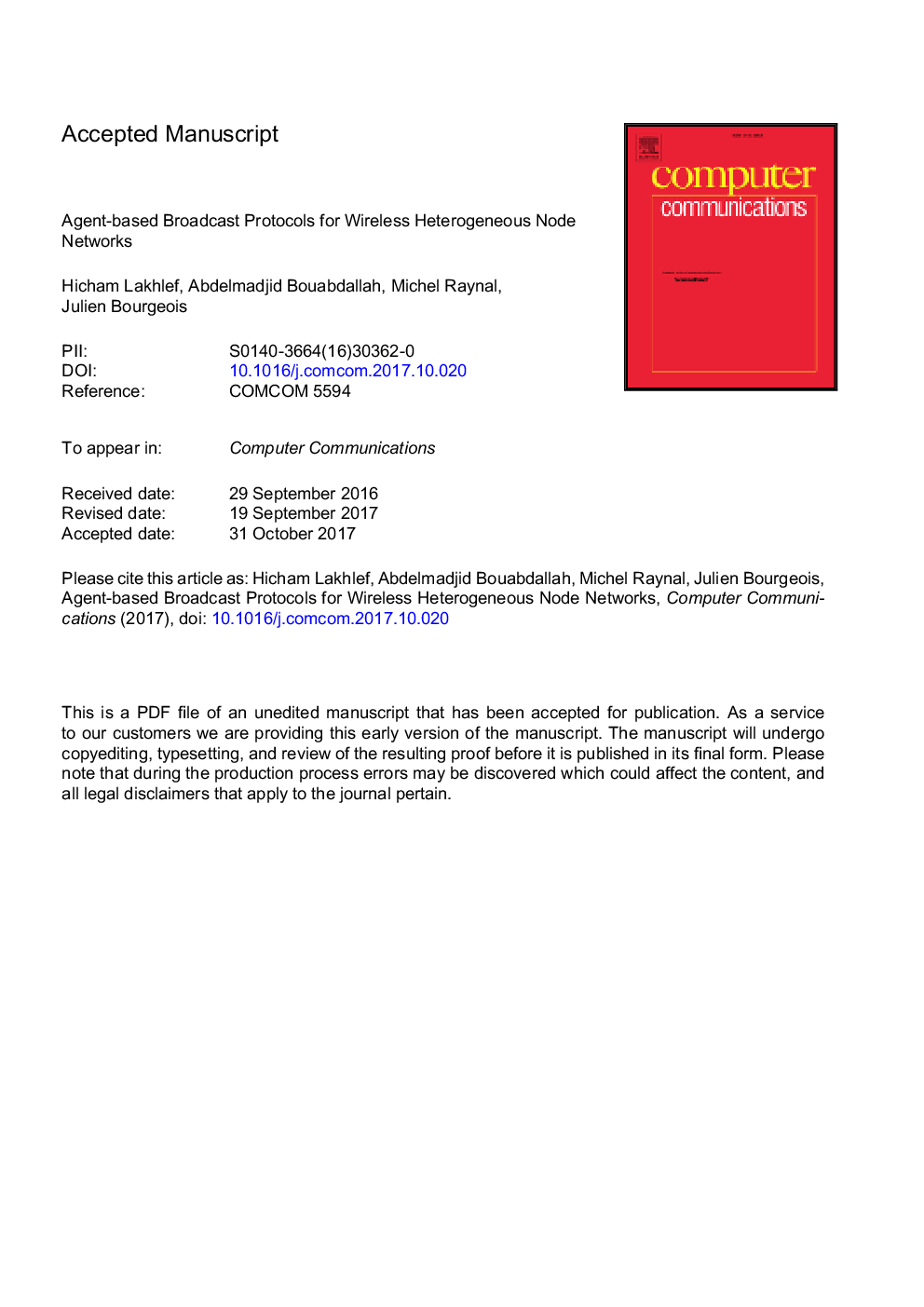ترجمه فارسی عنوان مقاله
پروتکل های پخش مبتنی بر عامل برای شبکه های گره های ناهمگن بی سیم
عنوان انگلیسی
Agent-based broadcast protocols for wireless heterogeneous node networks
| کد مقاله | سال انتشار | تعداد صفحات مقاله انگلیسی |
|---|---|---|
| 155635 | 2018 | 19 صفحه PDF |
منبع

Publisher : Elsevier - Science Direct (الزویر - ساینس دایرکت)
Journal : Computer Communications, Volume 115, 1 January 2018, Pages 51-63
ترجمه کلمات کلیدی
اینترنت چیزها، پخش موازی، پروتکل های ارتباطی، مسیریابی مجدد، بدون برخورد، بهره وری انرژی،
کلمات کلیدی انگلیسی
Internet of things; Parallel broadcasting; Communication protocols; Permutation routing; Collision-free; Energy-efficiency;

